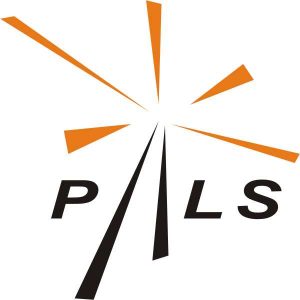PALS_logo-300x300.jpg

Part 14 of 18 Parts (Please read Parts 1 thru 13 first)
Every process in nature operates on a particular time scale. The instabilities that plague the laser ablation process require a certain amount of time to develop. If our new process operates on a much smaller time scale, then the instabilities will not have the time to develop. To be specific, the troublesome Rayleigh-Taylor instability requires a time scale of nanosecond or billionths of a second to appear. By contrast, the formation and accelerations of portions of plasma observed by Sauerbrey and others take place on a time scale of picoseconds or a trillionth of a second. This is over a thousand times shorter than the nanoseconds involved in Rayleigh-Taylor instability.
The ponderomotive force which is evoked by the laser pulse’s electric and magnetic fields has its impact long before the heating and resulting pressure have time to develop. Picosecond or femtoseconds are required to trigger the ponderomotive force. Nanosecond pulses were employed by the National Ignition Facility in experiments that attempted but failed to reach fusion ignition by the heat-driven process of ablative implosion were far too long.
Hora said, “It took dozens of years to realize the basic difference between the thermodynamic dominated laser fusion with nanosecond pulses in contrast to the entirely different non-thermal processes with the thousand times shorter picosecond laser-plasma interaction. For nanosecond interaction … the laser energy has to be thermalized to produce… the hydrodynamic and gas-dynamic pressures for ablation, compression, heating and thermonuclear reactions… These problems can be reduced if the processes are performed within very short times such that the problematic mechanisms don’t have sufficient time to develop… During the interaction, the dominating forces are not of thermodynamic nature but of the non-thermal electrodynamics of the laser fields with the plasma.”
Hora dropped the spherical implosion scenario in favor of something much simpler. He used a cylindrical shape instead of illuminating a spherical target by simultaneously hitting it from all sides with laser pulses. Hora’s design called for focusing a single ultra-high-power laser pulse on one end of the cylinder. Nuclear fusion ignition would be achieved by a single plasma portion “piston” propelled by the ponderomotive force into the bulk of the fuel.
In 2009 and 2010, extensive calculations indicated that the conditions for ignition of a hydrogen-boron fuel via laser pulse are much easier to reach with cylindrical geometry. Actually, this should not be much more difficult than triggering the popular deuterium-tritium reaction.
During that time, laboratory experiments demonstrated the generation of hydrogen-boron reactions triggered by ultra-short-pulse lasers. The quantity of the reactions observed grew rapidly as the laser intensities and laser pulse qualities were improved. Analysis of the experimental results proved that the reactions were triggered by nonthermal mechanisms, rather than heat.
In 2005, the group led by Belyaev in Moscow, Russia succeeded for the first time in triggering hydrogen-boron reactions by an intense picosecond laser pulse hitting a boron rich polymer target. One hundred thousand alpha particles were observed as products of the hydrogen-boron reaction.
In 2014, similar experiments carried out at the Prague Asterix Laser System (PALS) facility in the Czech Republic yielded several millions of alpha particles per shot. Following that experiment, there was a sustained effort by the PALS group to optimize the target and laser pulse profiles which pushed the number up to a billion alpha particles per shot. Finally, at the beginning of 2020, an international scientific team, from the Czech Republic and Poland released an announcement titled “Laser-driven proton-boron fusion: A way to radiation-free nuclear energy?” This paper said that they had achieved one hundred billion alphas and issued a call for action:
“Following a recent experiment at the Prague Asterix Laser System (PALS), Czech Republic, we report a record yield of 1011 alpha particles, achieved by focusing a sub-nanosecond, 600 J laser beam onto a boron nitride thick target. … We show that such a surprising figure is not of a thermonuclear nature. It is rather explicable in terms of a beam-driven fusion scheme… The reaction yield achieved this way is 100 times higher than that achieved at the same facility in 2014, and preludes to a further 10-time increase by straightforward optimization of the target. Our findings, recent theoretical predictions and the advent of dramatically enhanced laser capabilities call for an urgent, systematic investigation of possible ignition schemes in laser-driven proton-boron fusion.”
Please read Part 15 next